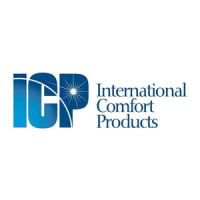
Do you have a question about the ICP NTC5075BFD1 and is the answer not in the manual?
Essential rules for safe operation and maintenance of the furnace.
Precautions to prevent pipe freezing and water damage during cold weather.
Identifies substances and areas that may require outside air for combustion.
Defines confined space and requirements for air openings.
Specifies requirements for air openings and duct sizing for combustion.
Discusses requirements for unconfined spaces and tight construction.
Outlines safe venting practices for Category I furnaces according to US codes.
Procedure to check venting and combustion air for safety after installation.
Guidelines for terminating horizontal vents to ensure safety and prevent damage.
Specific requirements for venting through different wall types.
Procedures for inspecting masonry chimneys before installation.
Recommends double wall Type B vent connector for reduced heat loss.
Details restrictions for interior and exterior masonry chimneys.
Step-by-step instructions for installing the optional masonry vent kit.
Guidelines for proper gas supply connection and input rating.
Method to check input rating using the gas meter.
Procedures for adjusting furnace for high altitude operation.
Steps for changing main burner orifices for proper gas input.
Local and national code requirements for gas piping installation.
Requirements for safe and code-compliant electrical wiring and grounding.
Instructions for thermostat mounting, wiring, and heat anticipator settings.
Wiring guidelines for optional equipment like humidifiers or air cleaners.
Specifies approved return air applications and sealing requirements.
Guidance on designing air distribution systems for optimal airflow and noise reduction.
Requirements for duct insulation and sealing for various installation environments.
Importance of an access panel for checking heat exchanger leaks.
Information on filter types, sizes, and mounting options.
Instructions for installing filter racks for side and bottom return applications.
Reference to startup procedures and immediate safety checks.
Requirements for gas supply pressure and manifold pressure settings.
Procedure for adjusting manifold gas pressure for optimal burner performance.
Steps for adjusting the pilot flame for proper main burner ignition.
How to visually inspect main burner flames for correct color and pattern.
Procedure to measure air temperature rise for correct blower speed setting.
Instructions on how to adjust blower speed for optimal heating performance.
Wiring the fan control for continuous blower operation.
How to select different blower speeds for various modes.
Setting the same blower speed for heating and continuous fan modes.
Annual maintenance check for cracks in pressure switch tubes.
